#these are not boards by the way. i boarded the sequence and then created the animation ref that you see posted here
Explore tagged Tumblr posts
Text

an Anne vs. Andrias sequence that Matt, our post editor Andy, and myself brainstormed up during the post production process! Many thanks to Saerom for executing it so well ^^
#these are not boards by the way. i boarded the sequence and then created the animation ref that you see posted here#we did a lot of work in post- it was a lot of fun! And very occasionally we would add some entirely new scenes during the post process#this was definitely one of the biggest adds!#amphibia#amphibia spoilers#animation
418 notes
·
View notes
Text

Types of Divination
I recently saw my friend Dagan ( @olympianbutch ) respond to an ask about his forms of divination and thought it'd be fun to go over the ones I know of! A lot of people know of tarot and pendulum but there's so many more that deserve to be be tried and maybe someone will find a new method that works for them ♡

• 𝐓𝐡𝐞 𝐂𝐚𝐫𝐝𝐬 •
Tarot- One of if not THE most well-known forms of divination. Tarot typically consists of a 78 card deck with 22 major arcana cards and 56 minor cards. These cards typically have a set and known meaning universally across all decks.
Lenormand- A (usually) 36 card deck typically used for fortune telling. As opposed to tarot, lenormand is read in a sequence and is considered more straightforward than tarot. One of the most common readings for lenormand would he The Grand Tableau, which uses the entire deck to create a "snapshot".
Oracle Cards- Oracle cards vary vastly across different decks, as each deck has different cards with different meanings. They typically create a more specific answer than tarot.
Cartomancy- Tarot is often confused as cartomancy, but cartomancy is its own separate divination style. Cartomancy typically involves using a deck of playing cards for divining questions. It has its own reading system separate from tarot and usually involves some numerology in its deciphering.

• 𝐍𝐚𝐭𝐮𝐫𝐚𝐥 𝐅𝐨𝐫𝐦𝐬 •
Capnomancy (smoke reading)- Divining messages and answers from smoke. Incense smoke is one of the most common, but other fire sources producing smoke can be used.
Geomancy- Divination done through identifying patterns created in the earth (or on paper). The diviner will create geomantic figures at random (with 16 possible combinations) and divine messages and answers from them.
Hydromancy- Divining through water by observing reflections and ripples (either naturally occurring or created.
Botanomancy- A method that involves burning herbs, plants, or branches and diving messages/identifying energies through the smoke and flames.
Cledonomancy- A method involving "overheard words". The diviner will cover their ears while asking their question or for advice, leave their location, and then unplug their ears. The words and sounds they hear will be their response. This was typically done while asking the Hermes Agoraios questions and leaving the agora/walking away from the statue.

• 𝐈𝐭𝐞𝐦 𝐒𝐩𝐞𝐜𝐢𝐟𝐢𝐜 •
Pendulum (dowsing)- A form of divination that uses a pendant, typically on an evenly distributed chain or cord, to divine messages. The most common way it's done is by asking the pendulum (or spirits/entities etc) how the pendulum will swing for yes, no, and maybe answers. It is also common to use a pendulum board which has set spaces for yes, no, maybe, and occasionally letters for more refined answers.
Ouija- Also known as a spirit board, a suitable board consists of a board with yes, no, and alphabet, and goodbye at the bottom. A planchette is used to spell messages from the spirit/entity and answer auestions. It is known practice to always end an ouija board session by sliding the planchette to the "goodbye" section of the board.
Scrying- A divination method typically involving an obsidian mirror, a crystal ball, a pool of water in darkness, etc. A candle is commonly lit and the diviner falls into a trance-like state in which they'll see images and scenes depicted in the reflections.
Ceromancy (Wax reading)- A method that commonly involves the diviner pouring candle wax into water and deciphering the imagery seen above and below the surface of the water.
Tasseography (Tea reading)- Divination involving a tea cup and the leaves of the tea. The majority of the tea is drank, leaving just a small amount in the cup. The remaining leaves in the cup are interpreted typically for fortune telling.
Bibliomancy- The opening of a book to a random page and line/passage to divine messages and answers.
Astragalomancy (dice casting)- Throwing dice, typically to divine short answers. The reader will usually assign meaning to each number of the dice, the most common being yes, no, maybe.

I'm definitely missing more than a few, and several of these have been described to their bare minimum because they're fairly complex (ie, geomancy), but I had fun making this list regardless. Maybe I'll make in-depth posts about some of the more complex ones.
Regardless! I hope you found this informative in any way. Safe travels ♡
#divination#hellenic polytheism#helpol#hellenic polytheist#hellenisticismos#hellenisticism#tags for reach:#hellenic worship#hellenism#hellenic deities#hellenic community#witchblr#hellenismos
260 notes
·
View notes
Text


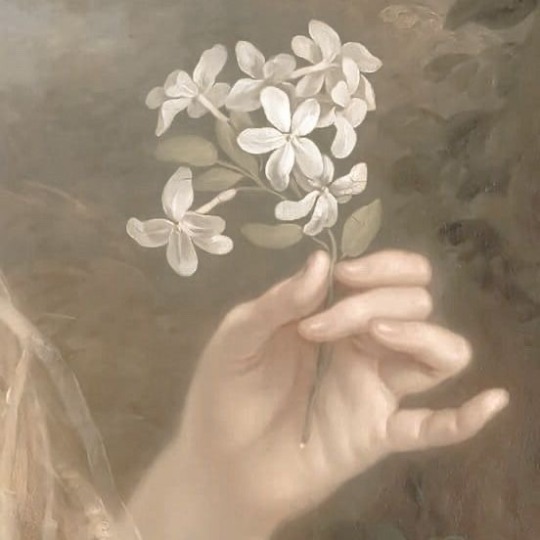
how to shift:
method 3: lack of awareness
sleep method gang, rise up. i'm serious. these methods involves reducing your awareness of this reality (or any other) to zero, or as close to zero as possible. This is a potentially prime state to trigger a shift. and by sleep method, i don't mean lucid dreams or SATS, or other partially aware states. i mean having a period of complete unawareness, like totally dreamless sleep, and then waking up in your DR.
this is completely different from the state of pure awareness by the way, because in the state of pure awareness you are aware. like, in pure awareness you have a full train of thought and total control. the absence of awareness is the opposite. it feels sort of like a "blip" where reality, time, and space passed you by and you were not aware of it. this absence of awareness during sleep is (in my experience) the most common cause of accidental or unintentional shifts, but you might be one of those who can trigger a shift to desired realities with this too.
sleeping is not the only way to get to the state of the lack of awareness. i'll cover a sleep method below, and a few other methods with tips and tools for how you might be able to use the state of lack of awareness to trigger a shift.
method 3(a):
sleep method
now, there are lots of sleep methods out there, some with complex routines and rituals, and some as simple as "go to sleep and hope to wake up in your DR." the sleep method here will be shimmer's sleep method, ie, if i want to use sleep as a shifting method, this is what i do! feel free to tweak or adjust the steps to suit yourself. i think of my method a lot like setting up dominoes, and then knocking the first one down right before i fall asleep. if all goes well, the dominoes will fall just so to trigger a shift to my DR while im totally asleep, and i'll simply wake up there.
step one: repetition
throughout the day, i want you to think about two things, a dozen times. 1) shifting, and 2) your DR. now, you probably already do this. you're a shifter, you're on shiftblr, you probably already think about shifting and your DR daily, so maybe try to change up the way you do it to increase the chances your brain is triggered to process that in your sleep. this step is also not necessarily about imagining shifting or daydreaming about your DR, though you can do that if you want to. it's about deliberately thinking about shifting, and your DR, at regular intervals. you don't need to do it constantly, but i'd recommend around a dozen times. this number is often recommended to those hoping to trigger a lucid dream, and the concept is the same: the more regularly you think about something while awake, the more likely you'll think about it while asleep too, as your brain processes those memories and thoughts while you sleep.
step two: saturation
do your usual bedtime routine, whatever it is. now, before you go to sleep, i want you to saturate your awareness (which is currently in your CR) with your DR. do this however you want, i do it in different ways each time, it's really best to pick something that feels natural to you. if it feels like homework or boring or stress, you're naturally averse to that, so pick a way you like. scroll your pinterest board, review your script, rewatch your show, imagine your DR, etc etc. the goal here is just to get your CR brain, and your awareness, to soak up thoughts and visuals and words about your DR.
step three: visualize
now you're laying in bed, about to go to sleep. i want you to create a short visualization sequence (remember, visualization does not just mean actually seeing images with your mind. think about it, pick other senses to visualize, monologue it in your mind, tell yourself about it, imagine it.) so, anyway, visualize yourself falling asleep in your CR, and then waking up in your DR. it should be a fairly short sequence, like you're visualizing about 10-30 seconds of time passing. think about how it feels to fall sleep here, and then how it feels to wake up there. pick one or two things about each moment to focus on. once you have this short sequence, repeat it about a dozen times. repeating this single, short sequence is key.
step four: domino
you decide what your domino is. as you're going to sleep, do something to trigger that "domino effect", and remember your goal is to fall asleep in your CR. so don't pick something that keeps you up. maybe get into a light meditative state (that's my preference,) maybe you like to repeat a mantra, maybe you want to get into hypnogogia for awhile, maybe you're a sleep paralysis enjoyer (i fear you, tbh). maybe you just roll over and fall asleep. whatever it is, remember your goal is to fall asleep, not to shift from that state, so don't stress yourself out or keep yourself up. everything you've done so far has been to prime your brain to trigger a shift during sleep, while you're not aware, so don't lay there waiting for the shift to happen or for signs of a shift. don't strain or agitate. the point is to not be aware of the shift when it happens!
step five: wake up in your DR.
if it didn't work, try again, or try a different method!
method 3(b):
meditation: "blipping out"
now, most of the time i see people talking about "blips" or "blinking out" or losing awareness or time when meditating, they see this as a mistake or mishap because it's happening while they are trying to get into a different meditative state, like pure awareness or focus 10 or something else. this method is ideal for anyone who this happens to, and it's a way you can use it instead of trying to work against it.
step one: visualize
before you meditate, i want you to create a short visualization sequence (remember, visualization does not just mean actually seeing images with your mind. think about it, pick other senses to visualize, monologue it in your mind, tell yourself about it, imagine it.) so, anyway, visualize yourself "blipping out" while meditating. how does it usually feel to come back to awareness? visualize that "coming back" moment happening as your DR self in your DR, instead of here. visualize "blipping out" here, and coming to awareness there. it should be a fairly short sequence, like you're visualizing about 10-30 seconds of time passing. pick one or two things about each moment to focus on. once you have this short sequence, repeat it about a dozen times. repeating this single, short sequence is key.
step two: blip out
whatever meditation or method you've used in the past that cause you to experience a "blip" in awareness, use that again. if it's never happened, try a few different ones until you find one that works for you. the last step was about priming your awareness to come "back" to your DR, so hopefully you do!
method 3(c):
severance method
the name is tongue-in-cheek, this could just as easily be called the adhd method, the trigger method, etc etc. this method doesn't require any meditation, or reaching a different state of awareness. the goal of this method is to hopefully catch your CR brain unawares, and trigger you (awareness) to shift when you (CR self) has forgotten to resist. if this method works for you, then you will shift while totally awake, and doing something entirely mundane in your CR, and potentially when you've forgotten entirely that it was even supposed to make you shift.
i think the severance show is a good way to humorously exemplify the goal of this method: to set a specific "trigger" (place, action, etc) to signal your awareness to shift. if you haven't seen it, in the show the characters awareness is triggered to switch to another identity when they descend or ascend the elevator into work. you can pick anything as your trigger, but personally i recommend picking something you do several times a day, up to a dozen times per day. you could pink something you do all the time, like blinking, but i think that could be strenuous to commit to or you'd end up forgetting to actually do the method each time.
step one: pick your "trigger"
this could be anything, but i'll list a few recommendations: every time you plug your phone in to charge, ever time you open the bathroom door, every time you sit down, every time you go up a set of stairs, every time you turn a light off, etc, etc. pick one that works for you.
step two: repetitive visualization
now, pick a time period. it could be a day, i'd recommend several days or a week. every single time you're about to do your trigger (ie, before you sit down, before you flip the light switch, etc) visualize yourself doing the trigger, and then becoming aware in your DR. create a short visualization sequence (remember, visualization does not just mean actually seeing images with your mind. think about it, pick other senses to visualize, monologue it in your mind, tell yourself about it, imagine it.) like you're visualizing about 10-30 seconds of time passing. pick one or two things about each moment to focus on. repeat it right before every time you do your trigger action.
step three: stop
now, hypothetically there's the chance you get triggered to shift just from step 2, but you don't necessarily go into it expecting that. as this is a lack of awareness method, the goal is to prime your brain and awareness, and then stop. after you pass your time window you set before (a day, a week, whatever) you don't have to visualize every time before you do your trigger action. hopefully, when you're not thinking about it, your awareness will be triggered to shift out of habit. if after a few days, a week, or whatever time period feels right to you you're never triggered to shift, then either try again, or try a different method!
troubleshooting:
similar methods: as you'll likely notice, the above methods have a lot of similarities. honestly, most shifting methods are very similar, and they are often quite similar to lucid dream methods, which are often quite similar to study methods, which are often quite similar to- you get the picture. the point is, the things we can do to trigger our brains to remember and do something we're not consciously fully aware of are often quite similar.
not working? try adding some of your own tweaks, mix up a few methods, or add some other tools. check out this post on what triggers a shift for ideas for what to add, and how.
#reality shifting#shifting community#shiftblr#reality shifter#shifting#desired reality#shifting motivation#how to shift#shifting methods#shifting guide#lack of awareness#sleep method#shifting meditation#meditation
228 notes
·
View notes
Text
Visual Symbolism in Ave Mujica 12
One of the strengths in Ave Mujica is how well the visuals complement the story being told. The fact that animation necessarily conveys part of its story through visual means seems like an obvious statement, but some productions are definitely better at it than others. If you're interested in learning about cinematography, the theatricality of Ave Mujica makes it a pretty decent starting point. It is never particularly subtle, as every narrative beat is accompanied by a strong visual device to emphasize it. The scene composition, the objects in it, and the lighting and coloring are deliberately chosen to complement mood reversals, the relationships between characters, or even consciously reference the narrative's literary inspirations. The clear intentionality in the production team's visual staging are really instructional in how these choices work to complement stories in general. I'll share a few neat examples below the break for spoiler containment.
The episode's opening scene is a wonderful illustration of how the production team handles the visual pacing for a narrative beat, and I'll talk about it here because it also sets the wider theme for the episode, which I'll come back to in a bit. Sakiko is about to be carted off to Switzerland on her grandfather's orders. The sheltered but smothering environment her grandfather has created for her are conveyed by the desaturated tones of the scene and the claustrophobic framing of the shots. She is protected from a storm, at the cost of her personal freedom. At the same time, she muses whether this is the fate that God has chosen for her.
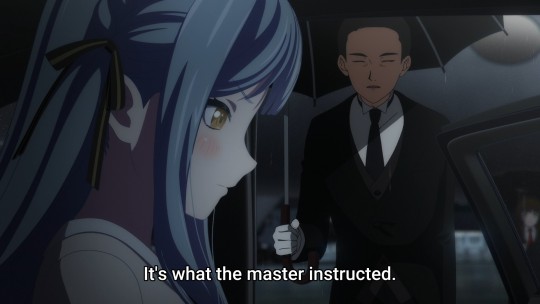
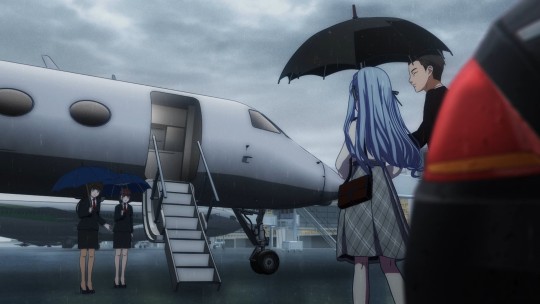
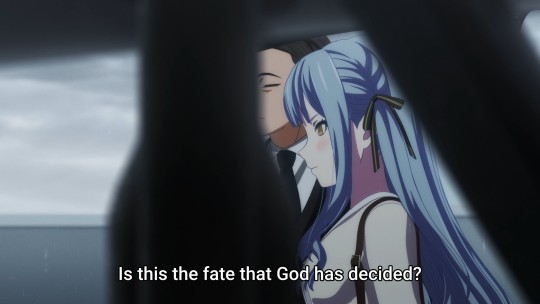
When Sakiko makes it to the airplane stairs, we arrive at the narrative decision point of the scene. She can either submit to her grandfather's orders by boarding, or she can reject the fate that has been decided for her. She hesitates, musing "I'm always like this. No matter how much I struggle, no matter how much I fight, everything gets swept away by the raging current." Each step to remain sheltered, to remain controlled, are a reminder of the unhappiness that following her grandfather's instructions have created.
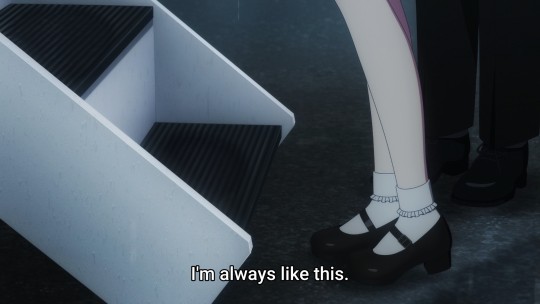

The scene's climax is reached when Sakiko makes the decision to reject her grandfather. Sakiko says, "I'm not getting on board." There is a short shot where she reaches her decision, a slightly longer shot of her hands clasped as if in prayer to find the resolve to follow through. There is a shot of an airplane flying away, symbolizing a departure without her, followed by the turbine wash blowing the umbrella out of her butler's hands. The sequence functions as a moment of divine providence. It answers the question posed as the decision point: a decisive no. Sakiko turns and runs before we cut to the series ending theme.

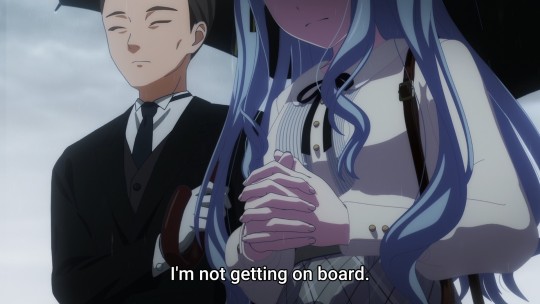


The decision to swap the running position of the ending and opening themes is itself an interesting narrative choice. Lyrically, the song is written from Uika's point of view, with a pastoral verse expressing a desire for Sakiko to come to her and goth metal chorus demanding a tight, everlasting bond between the two. The verse section is marked by visually spare images symbolizing the cast's loneliness, the bridge to the chorus accompanied by images of a mansion being demolished by flames, and the chorus conveying the various ways the cast feels trapped. Notably, the last shots are Uika reaching towards the light, a hand grabbing a sheet made into a rope, and then the Ave Mujica stage. Its placement at the beginning of the episode complements Sakiko's decision: she is irreversibly burning down the world her grandfather created to follow through with her lifetime commitment to the members of Ave Mujica.
That imagery neatly cues up the next part of the episode, which establishes a bond between Hatsune/Uika and Sakiko. I won't go into as much detail here, but there are a few neat things this segment does with visual metaphor, framing, and color that I would like to talk about.
There is some really neat visual symbolism in the rose garden scene where Sakiko first encounters Hatsune. This setting is established as Hatsune's world, so it reflects her landscape. Sakiko's appearance poses them on opposite sides of the frame, and this division is mirrored by the colors of roses present. Hanakotoba, the Japanese language of flowers, is a useful key to this frame composition: red roses symbolize love, pink roses symbolize trust/confidence/happiness, and yellow roses symbolize jealousy. Hatsune's decision to leave Tokyo and give up on Sakiko is symbolized by her trimming the red roses from the trellis, and the pink roses that surround her could be interpreted as something like self-confidence in her decision to do so. The mix of all three colors on Sakiko's side of the frame represent the turbulent whirl of jealousy, trust, and affection Hatsune feels towards Sakiko.

When Sakiko announces herself, she first calls for "Uika", causing Hatsune to drop the roses and begin running. It is the invocation of her "true name", Hatsune, that brings her to a halt. This is the moment where she, like Sakiko at the airport, needs to commit to her decision. Here, the framing emphasizes Sakiko's pull on her. A single, prominent red rose at her shoulder visually outweighs the pink roses behind her. The trellis of red roses, her love, shrinks into the background to converge on Sakiko, the villa, and the yellow roses. To stack the cards in her favor, Sakiko begins picking up the dropped roses, and holds them in a way that symbolizes she has received Hatsune's love. When Hatsune says that they shouldn't be together, Sakiko firmly commits by saying, "I'm not going back". The final shot conveys Hatsune, almost free of her love, with multiple paths ahead of her in a slightly less colorful world. Behind her, there is only one path leading to Sakiko and the Togawa villa, brighter, more well-tended... and deterministic.
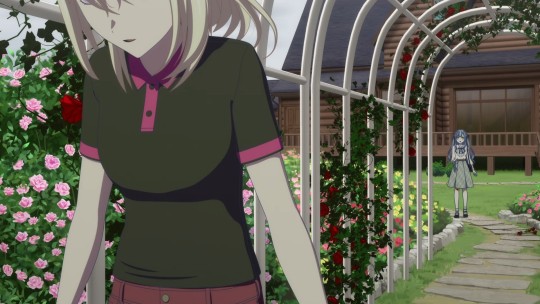
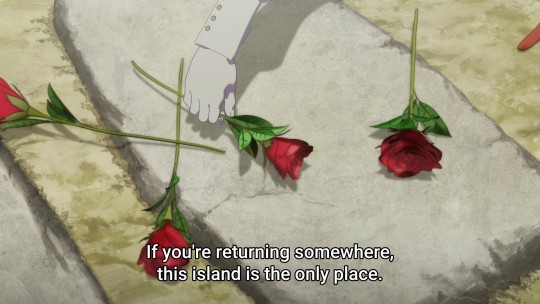
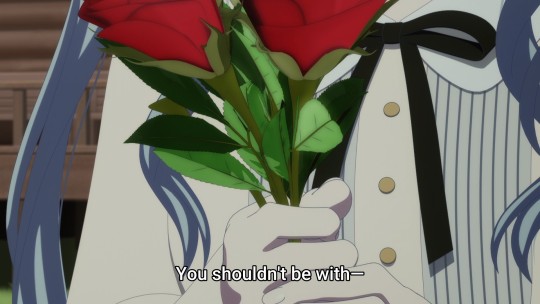

Although Sakiko manages to pull Hatsune back into her orbit, the ensuing conversations still have an underlying sense of tension to them. Hatsune and Sakiko are never shown directly looking at one another. The framing of these scenes use a variety of head-on close ups, shot/reverse-shots with the back of one character's head, low-angle shots at hip level, or wide shots that show them from a distance. The production team does everything but show the characters making eye contact while talking, intentionally creating a sense that they're talking at one another, not to one another. This decision also makes perfect sense in context: Sakiko is refusing to accept Hatsune's feelings of guilt and unworthiness, and Hatsune refuses to accept Sakiko's offer of forgiveness. This approach drags on so long - nearly ten minutes of runtime - that it begins to feel a little uncanny.
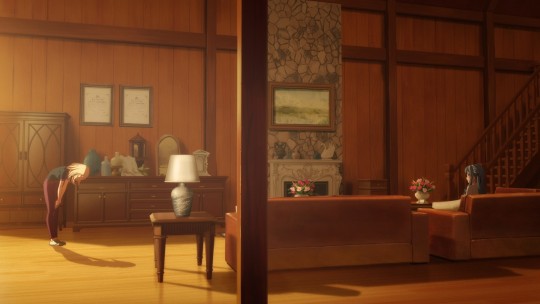
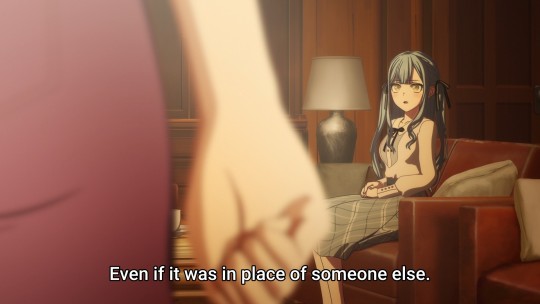
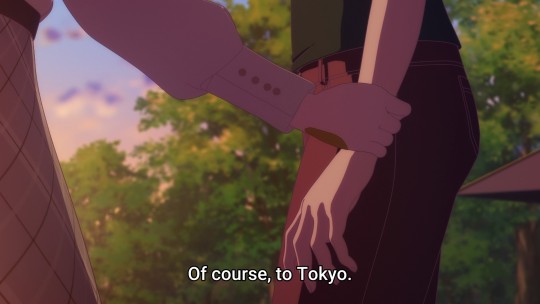

This tension continues to escalate until it's suddenly broken by the words Hatsune has desperately wanted to hear the whole time: "Our destinies are one. Didn't you give me your life?" After this point, the framing emphasizes their reactions to one another.
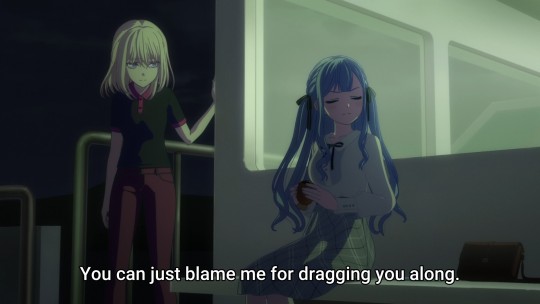


The unease created by the framing is emphasized further by the use of color in this episode. When they're shown together, the colors come across as slightly off - dark and muddy, even sickly. Before Hatsune accepts Sakiko's offer, the color choices are intense but desaturated. The color choices in these scenes might be conveying a sense of the darkness that Hatsune feels about her deception. After Sakiko makes the final decisive break with her grandfather to embrace "happiness" with Uika/Hatsune, there's a pale greenish tint to some scenes and an unnatural warmth to others. It suggests that there's still not something not quite right with their relationship.


I think the sickly lighting in the "happy" section loops back around to the central narrative theme of the episode, which constructs the idea that Sakiko is playing God. Her rejection of the fate God - her grandfather - decided on is echoed at the end with her declaration, "I have come to realize there is no need to meekly accept fate. There is no God. So, I will become God myself." There are little messianic overtones throughout the episode, like the shot of her bandaged feet to emphasize her suffering, the extended sequence of her accepting Hatsune's "sin" of betrayal (Uika even referring to herself as Judas in the lyrics of KiLLKiSS), and the direct references to resurrection in her script for the new Ave Mujica show. She has decided to become the master of her own fate, and in so doing, the fate of Ave Mujica's members.
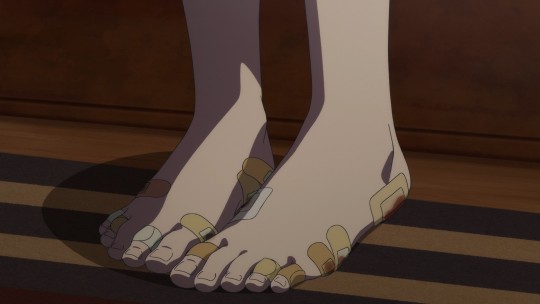


Ave Mujica consciously styles itself after Gothic literature. Within that literary framework, the decision to play God often marks the start of a terminal descent into madness. This descent into madness is often accompanied by the narrative point where the protagonist accepts the tragedy of their fate, surrendering their happiness to the inevitability of their own hubris. The letter Sakiko writes to Tomori at the end of the episode has an air of finality to it, echoing the Gothic protagonist severing the relationship to the one they truly desire. Sakiko's Faustian bargain for the lives of the Ave Mujica crew is the hubris she invited, her fate is to nurture them in perpetuity at the cost of her own happiness, as hinted by the lines in the script Nyamu is reading.
Again, the staging drives some of these points home. The first hint that something is awry is where Uika and Sakiko are laying together in Uika's loft. Their moment together is first interrupted by Umiri bringing band business to their attention. Her text comes at the exact moment the background music shifts to its outro. As Uika gets up to make coffee, she tells Sakiko she loves her, at which point the music cuts out completely. Although we see Uika's earnest intentions conveyed through her face, Sakiko's internal dialogue is telling. She stares up at the ceiling and says "Even if I turn away from fate, from the world, nothing will change. This little world will eventually come to an end, like waking up from a dream in the morning. Suddenly, and without warning." The camera then cuts to the pair of coffee mugs, established earlier in the series of symbolic of their relationship, as Sakiko says, "This smell, I hate it."
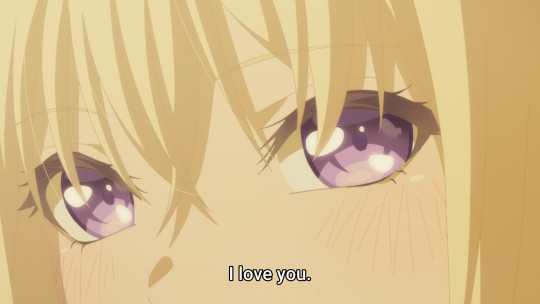

There is also a wonderful pair of mirrored shots in this episode, one of Sakiko playing in the Togawa garden with Uika, the other with her looking out the window as she praises Tomori's strength. The first shot symbolizes Sakiko's connections to her mother (the doll and piano) while showing the two splashing water on one another behind multiple barriers (the window, the garden fence). The second shot shows Sakiko looking outside wistfully from the piano, and placing her on the other side of the barrier from Uika. She closes her letter to Tomori with, "I may not be able to do it like you do, but I will protect my band in my own way."

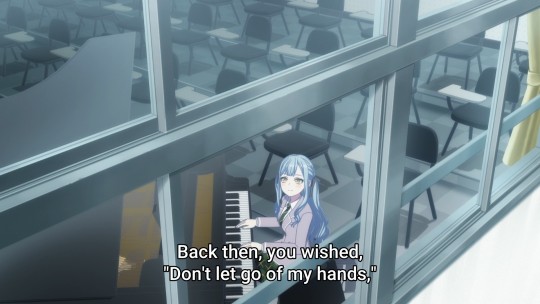
Taken as a whole - the unnatural coloration of their scenes together, the coffee monologue, and this paired shot function to highlight Sakiko's position as a Gothic protagonist. Her romantic overtures towards Uika are less a matter of her true feelings (which seem directed at Tomori) than they are a necessity to uphold her end of the bargain for Ave Mujica. Sakiko is performing a necessary act to coax Uika into a cage to keep watch over her fate as a member of Ave Mujica. The artifice of Sakiko's relationship with Uika doesn't make it any less real, but it does make it clear that it is not the fate she would have chosen for herself.
I honestly have no idea how to wrap this all up. Maybe one last point, not related to the visual presentation but tying the narrative points of playing God and tragic fate together, is the Gothic concept of corrupting blood. Hatsune's monologue in episode 11 suggests that the power of the Togawa family is matrilineal, as Sakiko's father and grandfather are both "adopted" into the family by marriage. This stages both the act of playing God (the power of a Togawa to force the creation of Ave Mujica) and the tragic fate that follows from that power. Her rejection of her grandfather is accompanied by the statement that he's the only one of them scared of the Togawa family. This makes sense, as her grandfather's position within the family can be jeopardized, but Sakiko's position as the true heir cannot. Her embrace of her bloodline and its corrupting influence comes at the end of the episode, when she reminds her old manager who she is: "Oblivionis of Ave Mujica - Togawa Sakiko". She off the carrot of the lead member of a top-selling stage act, but doesn't hesitate to show the stick of old money connections and power.
Sakiko's challenge to her ex-manager leads neatly into placing the opening theme at the end of the episode. Its placement symbolizes the permanent return to the managed madness of Ave Mujica's stage act, its members trapped in a funhouse mirror of their own identity constructed through Sakiko's manipulations.
152 notes
·
View notes
Text
On Swansea’s (often understated) role in Mouthwashing
I say this as a big swansea fan but I don’t rlly understand why ppl are acting like he’s not also complicit in what happened to Anya? AUs where “Anya tells Swansea” and he jumps to violently defend her don’t make sense to me because canonically she does tell him, as he admits to Jimmy. But swansea represents another way of interacting with the capitalist heteropatriarchy that ALSO harms victims: holistic jadedness and resignation.
Swansea is across the board unkind to the Tulpar crew. We can’t forget that he calls anya a “so-called nurse”

and says this to Jimmy, which (if unintentionally) reiterates Jimmy’s own warped perception of Anya’s usefulness and competence. This allows Jimmy to feel justified in his imagination of the nurse’s inferiority. Swansea’s clear lack of respect for Jimmy does less to hurt Jimmy than his lack of respect for Anya harms Anya, because at the end of the day, Swansea’s attitude is contextualized by the violent culture it exists in and he does nothing to reconcile with that when Jimmy becomes the captain. His resignation can thus be weaponized even by Jimmy, a man who Swansea disrespects but whose power he doesn’t try to meaningfully jeopardize, because his across-the-board disdain punches people already marginalized by the environment twice as hard as it does those with power.
Swansea doesn’t position himself as an ally, he positions himself as willfully uninvolved in everything, an observer to the shitshow ride to hell. Just because he dislikes Jimmy doesn’t mean he aligns with Anya. He makes it clear that he’s not on her side, either. After a life of doing what he felt was expected of him, Swansea on the Tulpar looks out for Swansea and Swansea’s comfort. In trying to situate himself outside of the politics of it all as an older white man, he simply allows them to play out. The toxic culture keeps existing, playing out in the microcosm that is this freighter, and Swansea in all his experience recognizes that shit has hit the fan and elects to coast through it, even explicitly numbing himself to it by breaking his sobriety. It is, of course, hard to force yourself to be sober—to see clearly. But had Swansea forced himself to get involved sooner, he might have set a precedent for Daisuke to recognize Jimmy’s abuse, which could have saved Daisuke’s life as well as created a safe space for Anya. But Swansea’s inaction forces both victims to confront an abuser on their own, unable to reap benefits from his privilege and experience.
Jimmy is clearly intimidated by swansea in a way he is not by Anya, Daisuke, or a post-crash Curly (Swansea, for example, physically manifests as an aggressor in Jimmy’s “responsibility sequences”, and Jimmy ties Swansea up to avoid what he sees as the real possibility of pushback that he doesn’t conceive of Anya being able to do). Swansea has a power he does not act on or with until it is far, far too late. In fact, he acknowledges in his final monologue that he was dissatisfied with the discomfort with opening his eyes and living an exemplary “good man”s life. The best days of his life are ones in which he’s belligerently drunk—days in which he didn’t have to hold himself accountable. He regrets the life he spent performing for higher-ups and we watch him reject it by scorning Captain Jimmy, but he also doesn’t want to be held responsible for helping other people when it’s their turn to endure the expectations and violence from similar (if not the same) higher powers. Tragically, he possesses the hindsight to recognize that how he acted on the Tulpar consequently wasn’t what Daisuke needed out of a role model, leading to Daisuke becoming a victim. His hands-off approach to emotional engagement with his young male intern (another symptom of patriarchal gender norms) may have been to avoid Daisuke turning out miserable and jaded like himself, but it doesn’t actually indicate to an already-confused Daisuke what the dangers of that attitude are. Swansea never admits his own shortcomings in a tangible way which, had they come from a man with experience and prestige like himself, may have shifted that culture that failed Anya. She comes to him with the story not because he has situated himself as any earnest friend, but likely out of desperation on a ship Jimmy now controls.
When we allow “the machine” (Swansea’s own words) to beat us down to the point that we don’t find it productive to challenge unjust power dynamics, we become complicit. I think too many people get hung up on his disdain for Jimmy and Jimmy’s fear of Swansea as a marker of allyship with Anya, but the truth is that Swansea. Is a bad ally. He’s hardly one at all. His long stint in the demanding capitalist environment molded a perfectly complicit result out of him, as it aspires to do, even if Swansea bitterly recognizes that. Jimmy’s overt violence from a position of power is a different and much more brutal approach to abuse enabled by people who have been left too tired and bitter to care that he does it. A man who could’ve intimidated and even threatened Jimmy is too resigned to try until there is literally nobody but himself left to fight for, which is an attitude carefully cultivated among the lower rungs of hierarchies to keep the top safe. Swansea in particular seems very unhappy with the capitalistic, patriarchal expectations laid out for him as a father, husband, and laborer. This becomes particularly resonant when you realize the symbolism of his role as mechanic: a job that can be deeply unpersonal, tasked with keeping the ship (the machine, if you will) itself going while other roles are more focused on managing the humans inside of it (e.g. nurse, captain). His decision to just stop trying and spare himself the grief instead of questioning why those expectations exist and how they would hurt the others onboard only delays him being directly targeted by Jimmy and doesn’t interrupt the latter’s violence.
Not a single man in mouthwashing is innocent in Anya’s victimhood. This is a statement tentatively uninclusive of Daisuke, because I think the game very deliberately positions him outside of manhood through his youth and thus struggling with the concept of “fitting in” to the patriarchy. Curly, Jimmy, and Swansea all represent different failures that ultimately perpetuate Anya’s suffering and force her to defend herself and finally take her life into her own hands. A holistic analysis of rape culture in MW necessarily engages with all three of them. Only not being a friend and ally to rapists and other male abusers isn’t enough, and Swansea proves it.
#mouthwashing#not sure I worded this as well as I would’ve liked to because I just woke up#but I’m standing by it for now#I think people don’t think enough about what swansea represents in the story and thus water him down#but with such a small cast we have to realize that everyone is deliberately written with meaning#maybe I’ll delete this later if I feel it was misarticulated#again I like swansea this isn’t meant to start some swansea hate train#I’m just glad that ppl are understanding Curly’s role as an enabler and I want that critical thinking to extend#even to characters we are inclined to like on their face because they’re also mean to Jimmy#.txt 🌊#mouthwashing game#swansea mouthwashing#this post is dedicated to my good friend al who is the resident swansea guy in my mind and talked thru this w me#ily my goat
322 notes
·
View notes
Text
I saw someone else say it and I really do think this was meant to be Billy's trial, not Agatha's.
It just makes sense. Billy and Tommy were born in the 70s era of WandaVision. Their teen years WOULD have been in the 80s, hence the style of this episode. Agatha has no connection to the 80s. If it was really her trial I bet they'd all be in pilgrim fits.
The aesthetic was a teenager's sleepover. The only teen here is Billy, and of course he'd want to have a sleepover with these women. He's a huge fanboy for them. I bet Billy was the one meant to lead the seance. The board jumped out when he came near it, after all. He read the rules off for it. If he'd led the seance, then who knows, we may have heard from a certain red-haired woman he has connections to.
But because he didn't, the trial had to adjust itself. It created a situation in which the whole coven turns on Agatha, the exact opposite of what Billy would want. All unity and cohesion won was lost, the very thing he'd been most hoping to achieve with them. This puts him where the trial needs him, however. He's the only one opposed to what's going on, the only one (well, except Rio ofc) who's completely not listening to Evanora, and so he notices when Nicholas starts communicating through the board. The criteria successfully having been met, the trial ends, and Billy's sigil wears off, no longer needed. Cue the big ending sequence.
EDIT: Alternatively, it's also possible the trial's natural course couldn't be followed because Billy's sigil was preventing it, and so the trial had to occur differently and in a way that would destroy the sigil. If this trial was meant to illuminate new truths by speaking with the dead, maybe those intended truths were blocked by the magick of the sigil, and so it had to find some way to course correct. This would be especially interesting if the theory I've been seeing about Billy actually putting the sigil on himself is the truth. He's been tampering with this whole process without even remembering it was his doing. Maybe that's why the trials always seem to harm him. The first two drew his blood, and this one led to the sigil being destroyed. All very fascinating things to consider.
#agatha all along#billy maximoff#agatha harkness#evanora harkness#rio vidal#teen agatha all along#agatha all along spoilers
314 notes
·
View notes
Text
Okay guys, I’ve been seeing stories and ideas about the player/soul/vessel being an inconsiderate and antagonistic force that wants to stay in possession over Kris, and I get it. However, imagine this: the player/soul/vessel actually wanting to get out of Kris just as much as they do.
Think about it. The player created the vessel. The player was so on board to play as a custom character (at least the players that didn’t get spoilers). Then the game discarded the vessel and forced the player into Kris. The player didn’t ask for this any more than Kris did.
Don’t get me wrong, I absolutely agree that Kris hates the player and has every right to! I also agree about questioning the ethics and morality of being the player, especially when the custom sequence asked us to name the vessel and who created the vessel as separate questions! But to say the soul/player has intentionally possessed Kris and desires for it to remain that way feels…inaccurate. After all, one has to remember that we are all the “player”, so to even label the soul with a singular personality (let alone one so callous and cruel) seems bizarre to me.
I don’t know if anyone else shares this opinion, though. I’m just throwing my two cents into the void that is the Internet. And if you have a different perspective on how the player/soul/vessel is, that is perfectly valid!
#deltarune#deltarune vessel#discarded vessel#vessel deltarune#player deltarune#deltarune player#soul deltarune#deltarune soul#kris dreemurr#kris deltarune#deltarune kris#i hope i don’t accidentally anger or trigger people by saying something stupid in a video game fandom#again
95 notes
·
View notes
Text
Found a curious little thing in P3 Quarantine, which took me aback ngl
This is going to be quite a post, but I won’t place a tldr because I’m an annoying asshole (scroll down the post, the aforementioned detail is there)
Those who played P1 know that the game was always very vague about its time period. I covered it in another post of mine, but basically Patho Classic takes different features and aesthetics from several decades, namely from the 1910s and up to the 1940s. This is augmented even more by the subtle references to real literature/media/events, which created a sense of the game world being weirdly familiar but you couldn’t grasp what exactly made you feel this way.
Patho 2 (especially the Marble Nest) writing became less subtle, with open (or not that obscured) references to real events and literature. One of the brightest examples is Artemy’s mentioning of the Civil War continuing for the third year already ("Уже третий год идёт гражданская война.". That's a touch quote for the revolver). And this immediately “lands you back to earth” in a way; you understand “Well, this must be the early 1920s then” (obviously with the assumption that it's the Russian Civil War we're talking about). This replica of Haruspex doesn’t necessarily break the immersion, but it makes the storytelling a bit more direct.
And then comes Patho 3 Quarantine. All that I’m going to talk about below started as a mere joke for myself: on Day 8, when the Bachelor tries to board a train, we find ourselves in the middle of the Steppe at night. A bright, full moon is shining.
We know that Pathologic takes place in September. Moreover, on Day 5, at Stillwater on Bachelor’s desk, there is a calendar, which indicates September 3rd (я календарь переверну-AHEM sorry). If this detail is anything to go by, this means the game starts on August 30th, therefore, Day 8 is September 6th.
You might say, “OP, but this might be just a random detail, that doesn’t mean anything”. HAHA do you think I’m called the astronome for nothing? Remember the full moon on Day 8? Assuming that we constrain our range of years to 1910-1940 (explained above), we can calculate for what years the moon was at its brightest on Day 8. Moreover, just the phase is not enough. We need to make sure that the moon was seen at night on that day (i.e. wasn’t below the horizon) on that latitude. I’m taking northern latitudes between 51 and 55 degrees, a typical coordinate for major Siberian cities (I’m taking Novosibirsk, Irkutsk and Ulan-Ude as references here).
I’m using Stellarium, but you can check it just with Google really (I did that as well), it will all have the same result. We have a full moon (or at least a phase close enough to it) for 1914 (phase 95.4%), 1922 (99.6%) and 1933 (96.8%). The moon is above the horizon, and tbh if I had the exact time when the Day 8 sequence happens, I would've tried to approximate the latitude used in the game (if there is one). Anyway, this is just a set of years. That's not that interesting, right? Would have been so, if not for the Bachelor's replica in dialogue with Filat.

(yea it's in russian ik) I'm talking about the second answer option (the highlighted one). There, Daniil inquires if the Termitary has been closed for the sixth day already, since Tuesday. This dialogue takes place on Day 5, September 3rd. Do you see where this is going? If September 3rd is the sixth day since the Termitary's closure, then it was sealed on August 29th. And it was Tuesday. Using New Style (i.e. Gregorian Calendar), August 29th was Tuesday in... 1922 and 1933. Using Old Style (after all, it was used in Russia until 1918), the closest ones are 1923 and 1934. In all honesty, if I were to choose just one of these years, it would be 1922. It makes sense in terms of the moon phase (it got the closest illumination percentage to the full moon, 99.6%). It coincides nicely with that Tuesday situation, assuming that in their country a Gregorian calendar is utilised. The game's aesthetics, Capital's architecture, and overall design are a clear reference to the European 1920s. More importantly, do you remember Artemy's note on the Civil War duration? Yes, technically, the Russian Civil War started in 1917/1918 (thus the third year is 1919/1920). However, I think this is where Pathologic gets back to its usual subtlety in writing. Indeed, the dates are not exact, but it's close enough to ring a bell for most players. Why did IPL include this in Quarantine? There is a certain chance that all the aforementioned details are not intentional and are just a mere coincidence. Maybe it's deliberate. This is, imo, a choice of the player. Eye of the beholder and all that. (for people who scrolled down without reading) Regardless, Pathologic 3 seems to take place in 1922 or, less likely, 1933. Now you are also burdened with the knowledge of it.
#ну давайте скажите мне что они не угорали всей студией когда ставили этот календарик с третьим сентября#im a professional overthinker as you can see#also when i see moon in media the first thing to do is to calculate the year#what astronomy does to a person#oh it never leaves you fellas#pathologic#pathologic 3#мор утопия#pathologic 3 spoilers#даниил данковский#daniil dankovsky
51 notes
·
View notes
Note
Have you ever regreted letting certain things go on air?
Like a scene in which you noticed something off that either could be improved upon or maybe something you just realized ruined the overall flow.
Oh yeah. All of the time.
TV Animation schedules are not for the weak of heart. Most of the time, by the time it's your turn to touch something, it's already on fire. I just told the story about how we had maybe two weeks and no resources to create our main title, and that's not unusual.
There were SO many times (especially in my early seasons) where something would go wrong or come back from overseas looking weird, and we just wouldn't have the time or resources to fix it. All of those Mandys smiling in Season One? I was having a hard time convincing board artists that Mandy should literally never smile, so they'd throw them in. I'd remove them, but I'd occasionally miss a panel and she'd come back smiling. Due to the vagaries of dealing with overseas studios, it fell to us to fix the problem and at the time we didn't have any actual animation staff.
Later in the series, I'd take stuff like this, screen-cap it, and reanimate it. There's an entire sequence in Big Boogey where I personally took two days to add burn marks to the characters. Is that something a show runner SHOULD be doing? Probably not. But when you're the last line of defense, you've got to do it yourself if you want it done.
TV Animation is a collaboration. But it's also (at my level) a compromise. There will never be enough money, time, or staff to really get things where you want them to, so it's all about finding the solution that gets you most of the way there.
808 notes
·
View notes
Text

BUCK / TOMMY - HELL HATH NO FURY LIKE A FANDOM SCORNED!
I did some thinking. Never good, but my brain can't wrap around the breakup that came out of the left field.
Recently, it was announced that a spin-off of "9-1-1" is in the works. While no locations have been finalized, Hawaii and Las Vegas have been suggested as potential settings. The showrunner is already working on the project, with filming set to begin in March 2025.
However, one of my biggest fears has come true: the focus of the showrunners is being diverted from the current show to concentrate on this new spin-off. All the energy runs in the new project. Also, at this point, we don't know if the mothership will be renewed. Without an early renewal, we must wait until May for the announcement. That is another reason why they are focusing on the new show. I wonder if this is why the plots feel rushed and repetitive. It's nice to revisit the past, but not ad nauseam. 9-1-1 does it too often lately. What's the point in bringing back Gerard and turning him into the butt end of a joke? What's the point in digging out Abby's Tommy and hanging it around Tommy Kinard's neck when nothing was ever mentioned in the past. The focus is clearly not on the current show. It feels like Tim abandoned the ship to board a new one. It's fresh, it's crisp, it leaves room for a lot of things. Even if the breakup was meant as a shocker. If your focus is somewhere else, you don't see it. Right now, the mothership is leaking and starting to sink. If Tim keeps his focus on the new project and isn't invested in the current show, the lights will go out sooner rather than later.
Bringing in an established character was probably the biggest mistake Tim could have made if he wasn't meant to stick around. Bring in Mary Sue or Marty Stu to be a LI but not a character with a history that connects to so many people on the show. You can't sideline them forever. Especially as Buck's bi-arc was announced as something big. And it was big. A bit too big to be treated the way it was. The fanbase that had built around TEVAN, or BUCKTOMMY, within weeks, was massive. It drew so many members of the queer community into the show. Suddenly, many of them felt seen. Tommy and Buck were different from the other queer characters out there. Different from what was represented on any other show. People were willing to watch to get the slightest glimpse of them. Because they felt real. Their chemistry shot into the stratosphere.
And then you go and end it on such a horrible note? I don't care if the haters call Tommy a plot device. Everyone on the show is one at some point—even Christopher, Eddie, or anyone else from the main or recurrent cast, Karen, for instance, the Wilson kids. You name it. Tommy Kinard came, saw and conquered. So why not give him more room? They did it with Taylor (yes, I know JLH was pregnant then, but that's reason enough? I doubt it). As I said in my other long post, you could cut in a sequence of 5 minutes and show a summary of Tommy's and Buck's life.
Tim makes the same mistake as many showrunners do. Cramming a shitload of plots into 42 minutes of airtime. Is it really necessary to tell that many stories in such a short amount of time? That feels like speed dating. You blink, and you miss an important scene. Every episode, you jump from plot A to B to A to C to B. We didn't have this fast pacing in season 1 or 2. Stop it. Make Quality plots over quantity stuff.
In Tommy's voice: And for God's sake, clean up that mess you created with that shitty breakup, or the audience will wither away.
I'm sorry. I could write a book about what is happening in my head. You'd get Super Brownie points if you made it here.
71 notes
·
View notes
Text
Five Questions with Jack Hughes
May 29, 2019 | Timestamp: Jack Hughes (5:03)
Do you feel ready to play in the NHL next season? "My speed and skill will translate well, and I believe in my heart I'm the best player in this draft and the best player on the board. I'm a confident kid so I think I had a great year. I know in my head and in my heart that I'm an NHL player and I think that after my experience at the World Championship, it solidified in my mind that I'm ready to go for it next year. I want to be an impact player and come out of the gates fast."
What was the most memorable moment for you as the youngest player for the United States at the 2019 IIHF World Championship in Slovakia? "Just to be in the locker room with the NHL players, go out to dinner with them, hang out with them. I feel like it was an invaluable experience and kind of like going to Harvard law school, I guess, because that's the best education you could get being around guys like that. You've got guys there like Ryan Suter, a 14-year veteran in the League, who was once in the same position as me. Patrick Kane and James van Riemsdyk took great care of me, taking me out to dinner, talking with me, and teaching me things. Those are guys I kind of created relationships with that will help me for the next couple of years."
Did you meet your goals and expectations at the NTDP this season? "You want to be realistic for the year, but I think of myself pretty high, and I had some goals in mind like breaking the record for most career points at the program and did that. I kind of shattered it and hopefully no one will touch it for a couple of years. I wanted to get the single season record but I missed a few games with an injury and finished with 112 points; the record was 117. Along the way, you don't really think of it that much but keep pushing the pace and pushing your play. I had a pretty good sequence of games at the World Under-18 Championship but our main goal was to win gold there, and we didn't. I'd trade all 20 of my points there for a gold medal, but I feel like I had a pretty good tournament."
How did two seasons at the NTDP make you a better player? "First of all, it makes you a better person. You're growing up with 23 kids your own age on the same team and dealing with the same things. It's kind of a brotherhood you create there, and you can't really say that about other places. The NTDP is a great spot to grow as a human. If you want to dedicate your life to becoming a hockey player, your game will absolutely go through the roof. There's a shooting room there and you're on the ice two hours a day, there are two games over the weekend, you skate 5-to-7 times a week, lift three times a week. If you want to be a hockey player and you're an American boy, the NTDP is the place you need to go."
What are your plans between the end of the Combine and the NHL Draft? "Just having some fun and relaxing. I don't think I'm going to work out or skate. I was in Europe for almost two months (at the World Under-18 Championship in Sweden and World Championship), just playing hockey, being dialed in and focused. Now that the hockey season is over, I think I'll just watch the Stanley Cup Final, golf and hang out with friends ... be a kid for the last month. Then I'll head to Vancouver. I think my life will change a lot once that weekend goes by."
#something a little bit heartbreaking about the last answer#‘Be a kid for the last month. Then I’ll head to Vancouver. I think my life will change a lot once that weekend goes by.’#because he wasn’t wrong#that’s the price of heading straight into the nhl right? get paid like a man get hit like a man be expected to perform like a man#even if you’re small and scared and young#a kid for the last month. a KID FOR THE LAST MONTH auuuggghh#anyway honorable mentions to quotes ‘it was like Harvard Law School’ (are you sure jack?)#‘taking me out to dinner and talking with me and teaching me things’ (so earnest!)#and ‘if you’re an American boy’#jack hughes#post#draft era jhughes
32 notes
·
View notes
Note
Can you write a beginners guide to chess?
Uhh. This is not my department. However; I may be able to elaborate on how my approach to chess is a bit different.
Currently; the Language of Chess is the most predominant form of [Language] and [Communication] when it comes to the Military and Political landscape.
As such; I appear to be uninformed and ignorant when I sit at their tables, despite having a*more* advanced form of tactical language in my repertoire.
[Step 1; I have been told, by assorted, musicians, in, assorted, fields; is ALWAYA SELF-PROMOTE. thats why I had to that first.]
Right now there are three aspects of the [game of chess] that are covered by the literature and the nomenclature.
1) The Boardstate
2) The Tactics
3) The Opponent
0) The Void
When we begin a [game of chess], the first thing we notice is the field and/or the pieces. That is the Board and the Pieces.
These combine together to create the term we know and love called [Board State].
In [Chess] the current [Board State] is the most important thing in all of the entire game. Why? Because unlike in more advanced games, there isn't really the fear of a "Board Wipe"
Because chess is supposed to be hyper-realistic and nobody comes back after a board wipe.
Now let's take a moment here to Google some GothamChess reaction videos to ChatGPT playing chess ... That is; a game between two LLMs where each seems to be playing by its own set of rules.
What is each of these things doing? Why/how can it break the rules?
Because Large-Language Models reference the board state as [one-move] differences. Instead of by [How a piece can move]
Now, this has probably been corrected by more advanced LLMs, but the example remains. You're welcome.
How each of those models might come to define what is meant as a [one-move difference between Boardstates] is up to that particular Large-Language-Model's interpretation.
2) The Opener!
[The Opener] is kind of like picking a class in a RPG, you follow a strict "Rotation" [sequence of moves, or algorithm] and the goal is to ensure to maximize your own opportunities over your opponent available opportunities. While maintaining your board state and/or rotation.
2) The Opener AND Boardstate
Because [The Opener] isn't as strictly defined as a class in an RPG; it may change when your Boardstate changes.
If for, for example, your opponent pushes you from "London Play" into the perfect "Grunfeld" Boardstate... Then you automatically get to choose if you wanna switch tactics.
^ this is kind of the key to my approach in chess. I let the opponent do what they want while reacting just enough to set-up my own board state *until* one of us sets off a "Move Cascade"
A [Cascade] is a series of moves that are forced, or the alternative is too high risk. And so each player looks as though they are playing speed chess getting through "The Cascade" but it's just [Asteroids or Plagues] hitting the board like in [Hearthstone].
The tricky part is knowing which move is most valuable.
3) The Opponent
Who are you playing against?
How do they react when you play certain moves?
Do they always react a certain way when provoked?
Do you?
Are both of you aware of the Opponent's Depth of awareness?
--This is my weakness here. I'm not a Poker Player, I'm not about the social algorithm, just the physical one.
Are they likely to switch Boardstates when presented with the opportunity or not? Are they aware of the possibility?
This one is not clearly defined, because this is anything that is outside the rules of chess. If, for example; you're playing chess "Prison Rules" style... What's stopping your opponent from throwing dust in your eyes and their "Referee" from messing with the pieces?
<aside>"referee" in this facet I'm using as a Fencing term. In a Brawl, you always show up with a possè in case the other guy in the duel and *his* possè don't "Play by the rules." Effectively; both sides should bring their own referees. But maybe the fight transcends individuals for some reason, then the referees get to Duke it out while we go for a cuppa something.</aside>
<aside>Now. When the Referees are both prison guards.. *everybody* has problems and the guards are probably raking the take for the simulated "prison beef."</aside>
The Void;
23 notes
·
View notes
Note
I love your Pokemon comics so much! I've reread them a ton of times, EAA has become such a comfort read. I just adore how you make Alola feel so alive, and the characters all feel so much more complex and interesting. Out of curiosity, were there other comics (Pokemon or otherwise) that inspired you? And are there other Pokemon fan comics you like or would recommend?
AWWWW Thank you so much!! 🥹🥰 Actually, I wasn't really inspired by any other Pokemon comics at the time I began making my first short comics. Despite Pokemon having one of THE most MASSIVE fandoms on the internet, it's honestly surprising how little ongoing fancomics there are. I've seen many artists starting Nuzlocke comics but I only know of ONE artist who ever finished drawing one (And I'm ebarrassed to say I didn't fully read it yet and don't know the name of it anymore, it's been so long 😂)
I think if there was any comic inspiration at the time in 2016, it must have been the webcomic Avas Demon. Not in terms of STORY or genre, but in terms of how the story was told in a 16:9 format like a storyboard or color test for an animated movie. I took a lot of inspiration from that in the way I boarded the comic and wanted to make it feel like a movie sequence, making more individual panels with varying expressions. But that ALSO ABSOLUTELY blew my work-load on each comic out of proportion, thus resulting in VERY irregular updates due to how detailed my backgrounds and shading became plus A LOT of additional poses like here for example:
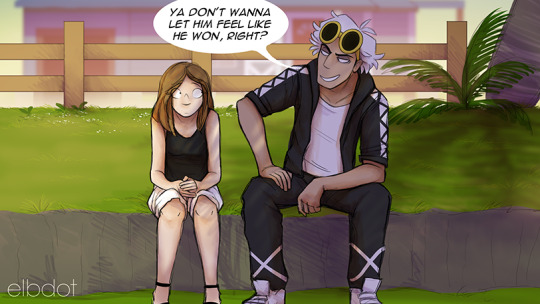
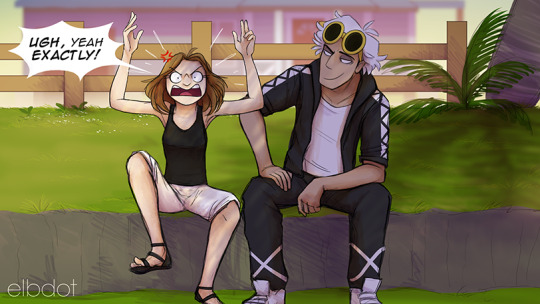
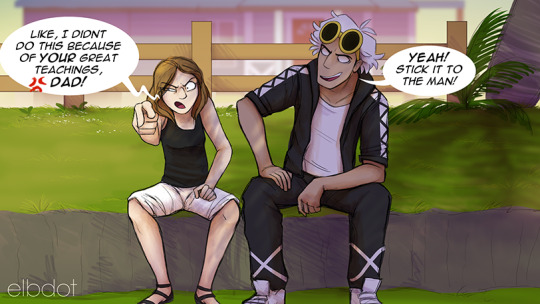
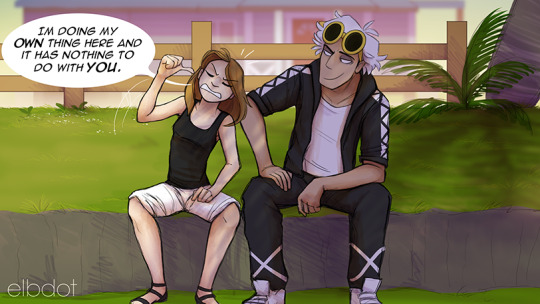
I'm proud of what I created back then, but after the most recent Arc I have decided to step BACK from this approach and have now heavily simplified my shading and am experimenting with reusing backgrounds and using new panel sizes and formats 😂 You'll see what I mean in the upcoming update this week. Surprisingly enough, I don't think the quality of art has dropped because of these changes! Also my love for adding additional expressions between panels has remained, they're just my favorite thing to do to bring life to the comic!
144 notes
·
View notes
Text
The Count of Monte-Cristo (2024) review
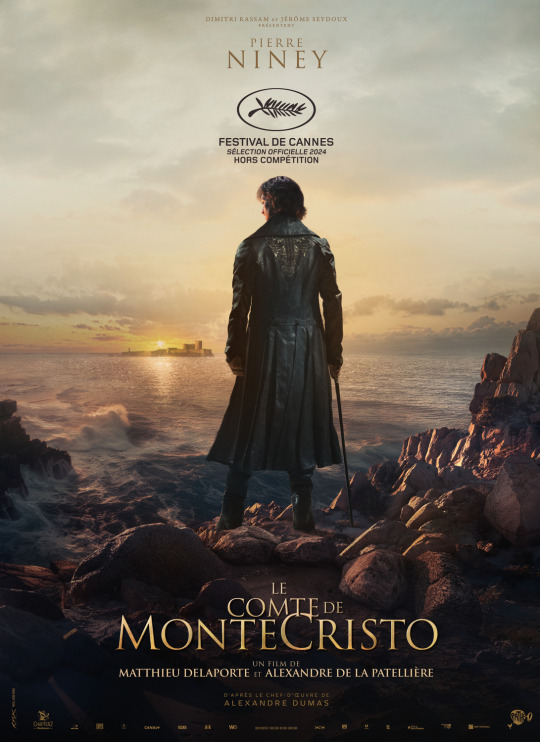
Je suis Batman!!
Plot: Edmond Dantes becomes the target of a sinister plot and is arrested on his wedding day for a crime he did not commit. After 14 years in the island prison of Château d'If, he manages a daring escape. Now rich beyond his dreams, he assumes the identity of the Count of Monte-Cristo and exacts his revenge on the three men who betrayed him.
I’ve been really enjoying this recent wave of French blockbuster cinema creating these lavish big-budget adaptions of their nation’s classic literature, with the recent highly enjoyable duology romp of The Three Musketeers (D’Artagnan and Milady respectively) and now taking on The Count of Monte-Cristo. I was a major admirer of Alexander Dumas’ novels when I was a kid, and by admirer I mean my father used to force me to read those books which at the time I hated him for, as I much rather would have spent hours on end on my GameCube, but now am forever grateful that I have the knowledge of storytelling which I gained from reading those pieces of literature. So I’m eagerly hoping that now with these expensive modern movie takes we will also get some of Dumas’ other great works get the contemporary cinematic treatment, such as La Dame de Monsoreau and The Black Tulip (though the latter may be difficult as there is already an older film version starring Alain Delon, and would be hard to recast Delon, let’s not kid ourselves!). As for Monte-Cristo, I’m not even going to sugar-coat it - this is a fantastic modern adaptation of a classic!
The sets are great and really invoke the post-Napoleon era of France; the costumes are gorgeous; the music score is grandiose and epic, really engrossing you in this decade spanning saga of revenge; the classic story is reinterpreted so well with the themes and the emotion, and the acting across the board is superb. Oh and the cinematography is to die for - wonderful long shot landscape sequences, great use of lighting, gorgeous shots of interior palaces - you can tell this film has been given all the money in the world, only unlike Amazon’s Rings of Power TV series that looks expensive but lacks any narrative depth, this film is both great to look at but also has a great story with awesome performance. Look, I really really liked this movie, let me rave about it!! Of course if you’re not French, you have to deal with subtitles, however don’t let that sway you, as this move manages to tell so much using its visuals and powerful music score that at times you don’t even need to read the subtitles to understand the emotion the characters on screen are going through.
Pierre Niney is honestly superb as the titular Count. From how he showcases him in his younger years as the excited young sailor wanting to prove himself to years later being this highly intelligent and driven yet calm presence, as well as taking on the various alter-ego’s of the Count using his different masks (very reminiscent of Fantomas) such as the dastardly Lord Halifax - Niney does such a stellar job here. What I also loved is how this adaptation takes the “superhero origin” approach to Dumas’ classic, with the Count being showcased as this cool dark vigilante like Batman/Bruce Wayne or Zorro, and even his dark menacing suit (which is dapper as f*** by the way!!) emphasising that. All the props to Niney, he adds so many layers and nuance to his performance, that even when he is super reserved as the Count, you can tell in his eyes the disdain and pure hatred he has for the ones that wronged him, but at the same time being able to showcase his guard dropping slightly when he is in the presence of his beloved lost love Mercédès (played gracefully by Anaïs Demoustier).
As for negatives, as even though I absolutely adored this movie, the inner critic within me still can’t help himself. This is a 3-hour long movie, and granted that is a result of the weight of the original book, however you do feel the length of this thing, but at the same time certain parts feel a tad rushed (due to the writers attempting to cram so much story and character development into the 3-hour frame) that certain side-plots and narrative build ups aren’t given their proper space to breath. One does wonder if this would have worked better as a mini-series, however on the other hand they probably would not have had the budget to make this thing look as good as it does. Secondly, certain details/plot-holes frustrated me which I won’t spoil, but one example is when Edmond and Abbé Faria are digging the escape hole from their prison chambers all those years, where the hell did they keep getting all those candles from to light their workspace?? I highly doubt in mid-1800s France prisons had little kiosk shops to offer inmates various groceries and household items. Happy to be corrected here, but honestly seeing those candles reminded me of Deadpool proclaiming “that’s just lazy writing”. And final complaint (before we can get back to raving about how awesome this movie is) is the ageing, or lack of it more. The tale of Monte-Cristo spans from 1815 and ends in 1844, yet the movie makes zero effort in making the actors look older the further down the timeline we go. The Count does look aged but that is due to the mask he wears, so when that’s off he looks like his younger 20-something self again. One of the main baddies Prosecutor de Villefort (played in true dick-fashion by Laurent Lafitte) looks exactly the same at the beginning of the movie and then right to the end. You’re telling me the make-up artists and hairstylists couldn’t give him a single grey hair or a wrinkle?
Again though, that was me with my critical thinking hat on. With that off, I want to reiterate how I truly enjoyed this new version of a classic tale that has been done so many times before, however this one may be one of my favourites. Truly engaging and epic in scale, with a ridiculously cool Pierre Niney in the titular role. He is… the French Batman!
Overall score: 8/10
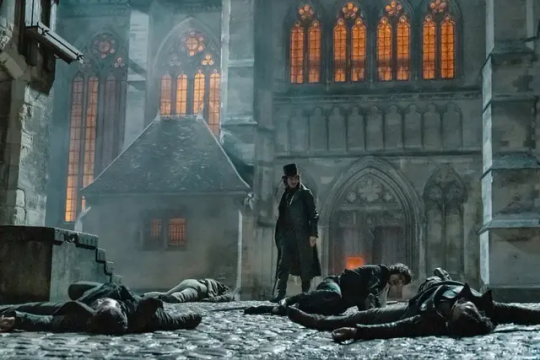
#the count of monte cristo#pierre niney#alexandre dumas#french cinema#cinema#2024#2024 films#2024 movies#movie reviews#film reviews#movie#film#adventure#action#drama#history#the count of monte cristo 2024#the count of monte cristo review#alexandre de la patellière#thriller#matthieu delaporte#anamaria vartolomei#laurent lafitte#pierfrancesco favino#bastien bouillon#patrick mille#anaïs demoustier#costume epic#period drama#costume drama
32 notes
·
View notes
Note
hey it’s me, the ole ball and chain. I’m making stir fry for dinner. can u grab a bottle of wine?
anyways i think i need to direct your attention to a roppiepop comic where Jason takes Tim on a date — and then tim freaks out because they’re retracing the steps of a murder case he just solved. This seems like perfect characterization to me: jason is wining and dining tim and cooking him fancy meals and Tim is overthinking everything to the max. Jason is shopping at the local natural grocery store for organic pasta and fresh lemons and tim is making a conspiracy bulletin board, red strings and all. jason is doodling “jason drake wayne” in his diary and tim is creating a computer program to analyze jason’s texts.
it all comes to a head when tim starts furiously interrogating jason about his motives after showing up at home to find a candlelit dinner and a bottle of wine waiting for him
Hey sweetheart, you got it. You want a red or a white, or dealer's choice?😘(Also, uh, hun, if you want to talk about including """balls"'" and """chains""" more in our relationship, then we can open the floor to that--)
!!! I think I know which comic you're talking about, and it's one of my favorites uwu as someone who, like Tim, also needs it laid on THICK to understand that someone is flirting with me fr fr and not just doing a bit with me (I did improv in high school, it is my curse to constantly 'yes, and' my way into misunderstandings 😔) I adore inflicting this particular brand of miscommunication on the blorbos ESPECIALLY with the batfam because they're so used to reading between the lines and anticipating each other's plans that it is HILARIOUS to me when they have enormous blind spots when it comes to mundane, non-vigilante related things, and especially with each other.
Like Jason thinks Tim knows it's a date because he accepted the flowers and smiled at Jason when he ordered the wine and seemed to be pleasantly surprised when Jason took him to this restaurant (because he'd seen Tim here more than once last month, so he must like the food here, right?). 'Clearly Tim is on board. Tim is pleased with this sequence of events. Tim definitely knows it's a date. Good job Jason, you've got this in the bag, you'll be kissing him on his front stoop by midnight'
Meanwhile Tim is in full mental lockdown, why did Jason ask Tim out in such a public setting, clearly there's something going on, clearly because he brought Tim a bouquet of the flowers found scattered at the crime scene of the murder case he was working last month, he knows something Tim doesn't; clearly because he ordered the red Jason is signalling that they're being watched and need to act natural; clearly because they're at the very restaurant Tim was staking out last month, where's the fire, Jason--
Tim being extremely suspicious of a legitimate attempt to woo him is everything to me, and I love it when Jason is only slightly more normal about it than him lmfao
#ty for the food <33 both the stir fry and the jaytim uwu#jaytim#🍷💥anon#asked and answered#also AAAAAHHHH I saw your ask about the iditarod and I'm!!! THAT'S SO COOL OMG#I am hoarding it in my inbox to stare at forever sorry <33
48 notes
·
View notes
Note
That a cappella scene at the end of Family Tree was so beautiful…

I love how that turned out. When we were talking about this episode in the writers room, our goal was to create an episode that felt meditative and relaxing. There's a mindfulness practice called the Five Senses Exercise. You simply ask yourself what you're currently seeing, hearing, touching, smelling, and tasting as a way to bring you back to the present moment.
We had each of the Greens represent a sense and I believe it was Shane who wanted them all to sing a simple a cappella song at the end. Jen Begeman boarded the sequence and when they pitched it, there wasn't a dry eye in the room. Our composer, Jo Horsely wrote the final song which, as you've said, is absolutely beautiful.
56 notes
·
View notes